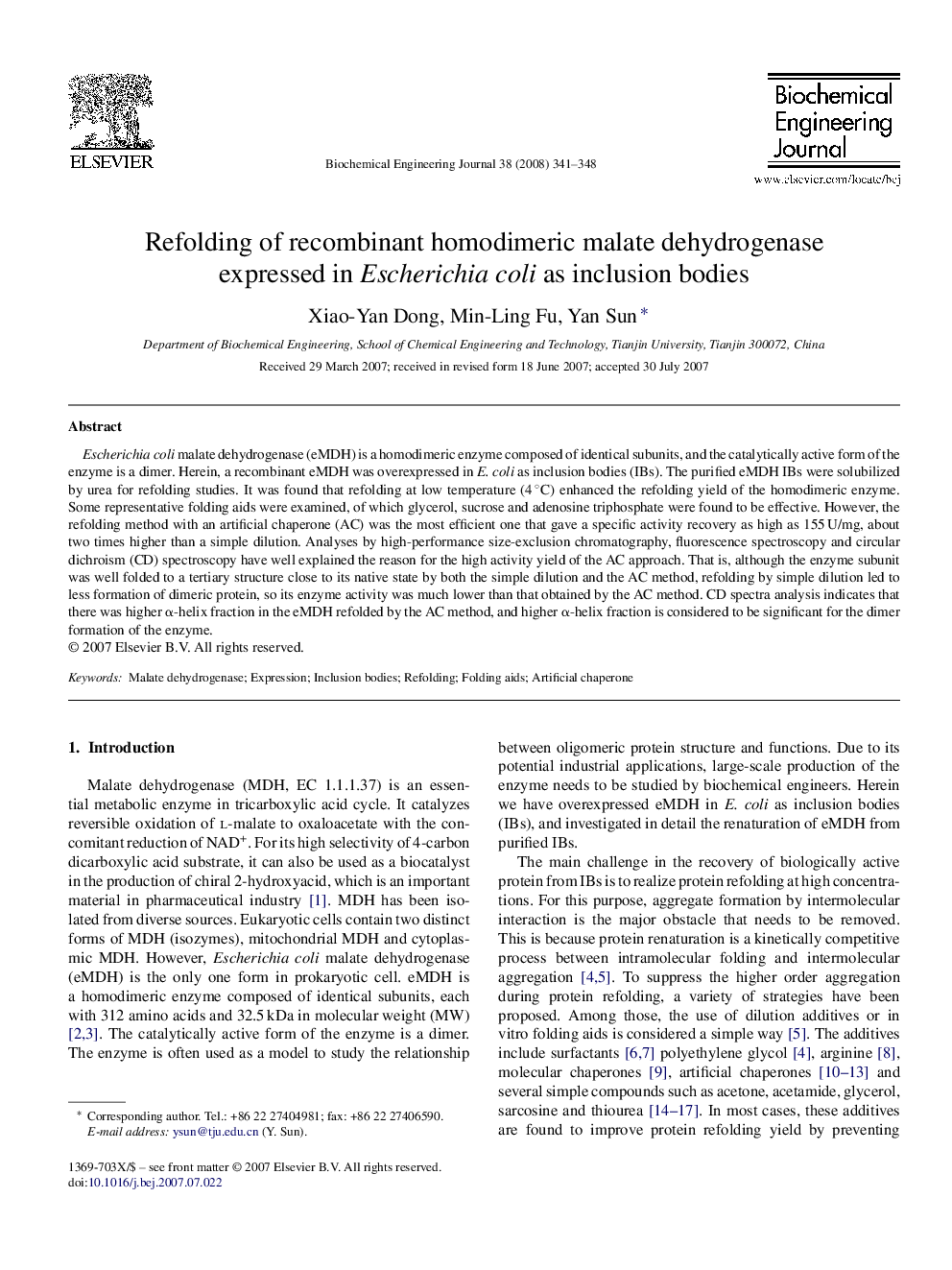| Article ID | Journal | Published Year | Pages | File Type |
|---|---|---|---|---|
| 4653 | Biochemical Engineering Journal | 2008 | 8 Pages |
Escherichia coli malate dehydrogenase (eMDH) is a homodimeric enzyme composed of identical subunits, and the catalytically active form of the enzyme is a dimer. Herein, a recombinant eMDH was overexpressed in E. coli as inclusion bodies (IBs). The purified eMDH IBs were solubilized by urea for refolding studies. It was found that refolding at low temperature (4 °C) enhanced the refolding yield of the homodimeric enzyme. Some representative folding aids were examined, of which glycerol, sucrose and adenosine triphosphate were found to be effective. However, the refolding method with an artificial chaperone (AC) was the most efficient one that gave a specific activity recovery as high as 155 U/mg, about two times higher than a simple dilution. Analyses by high-performance size-exclusion chromatography, fluorescence spectroscopy and circular dichroism (CD) spectroscopy have well explained the reason for the high activity yield of the AC approach. That is, although the enzyme subunit was well folded to a tertiary structure close to its native state by both the simple dilution and the AC method, refolding by simple dilution led to less formation of dimeric protein, so its enzyme activity was much lower than that obtained by the AC method. CD spectra analysis indicates that there was higher α-helix fraction in the eMDH refolded by the AC method, and higher α-helix fraction is considered to be significant for the dimer formation of the enzyme.
